Abstract
In a systematic approach, 37 duplicate samples of open system circuits (Bennett MA-1 ventilators) of patients in medical and surgical intensive care units were processed by direct and serial (APHA guidelines) dilutions. The paired difference test on 15 of the in-use circuitry solution samples indicated no difference between the direct and serial dilution methods (P less than 0.001). Seventy-seven additional respiratory therapy circuitry samples from similar intensive care patients were analyzed via a direct dilution method alone and processed microbiologically. The direct dilution procedure was a rapid and accurate means of evaluation of microbial contamination in the range of greater than or equal to 10 to less than or equal to 10(6) CFU/ml. High densities of organisms frequently were found. Sites of contamination included the proximal or patient end of the circuitry (heaviest), the nebulizer trap, and the distal or humidifier portions of the circuitry. The contaminants found were predominantly gram-negative nonfermenters: Acinetobacter calcoaceticus var. antitratus, Pseudomonas aeruginosa, Pseudomonas maltophilia, and Flavobacterium meningosepticum. Fermenters were Klebsiella pneumoniae, Proteus sp., Enterobacter cloacae, Citrobacter diversus, and Enterobacter agglomerans. Infrequently, gram-positive Streptococcus spp. and Staphylococcus spp. were noted.
Full text
PDF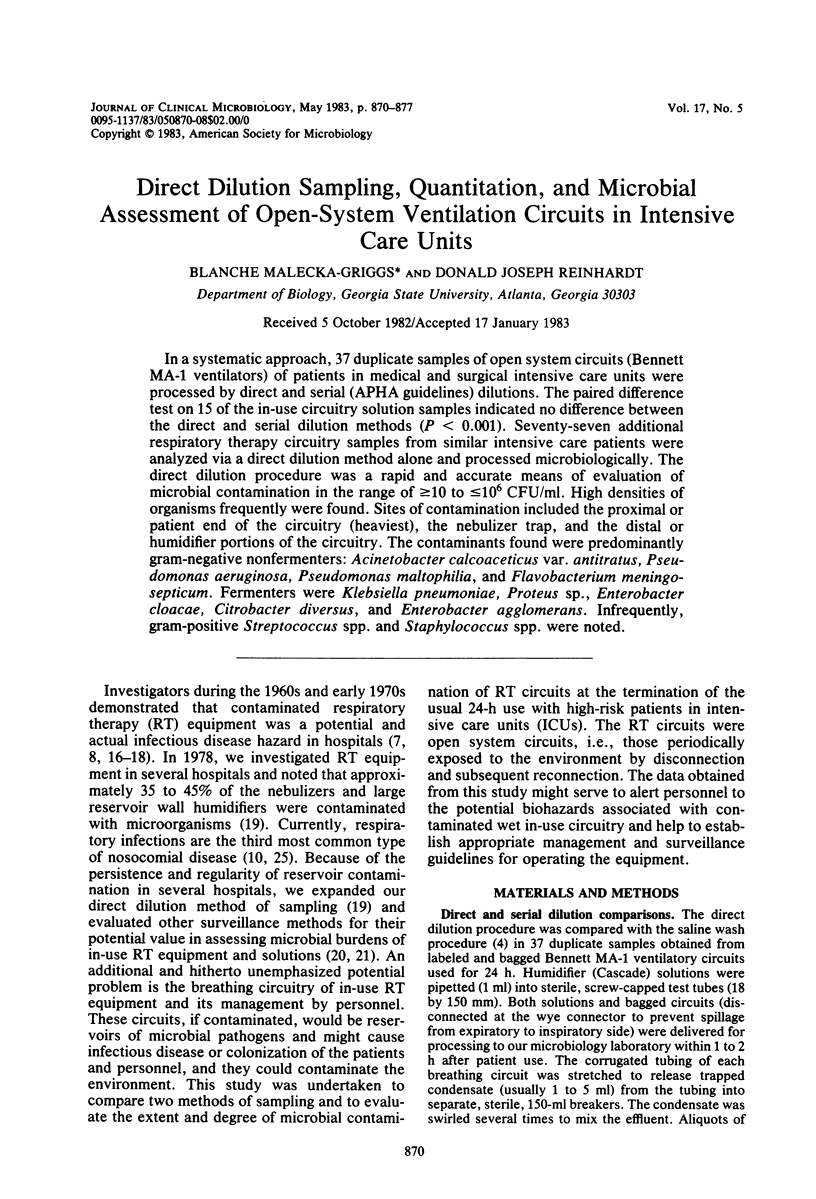
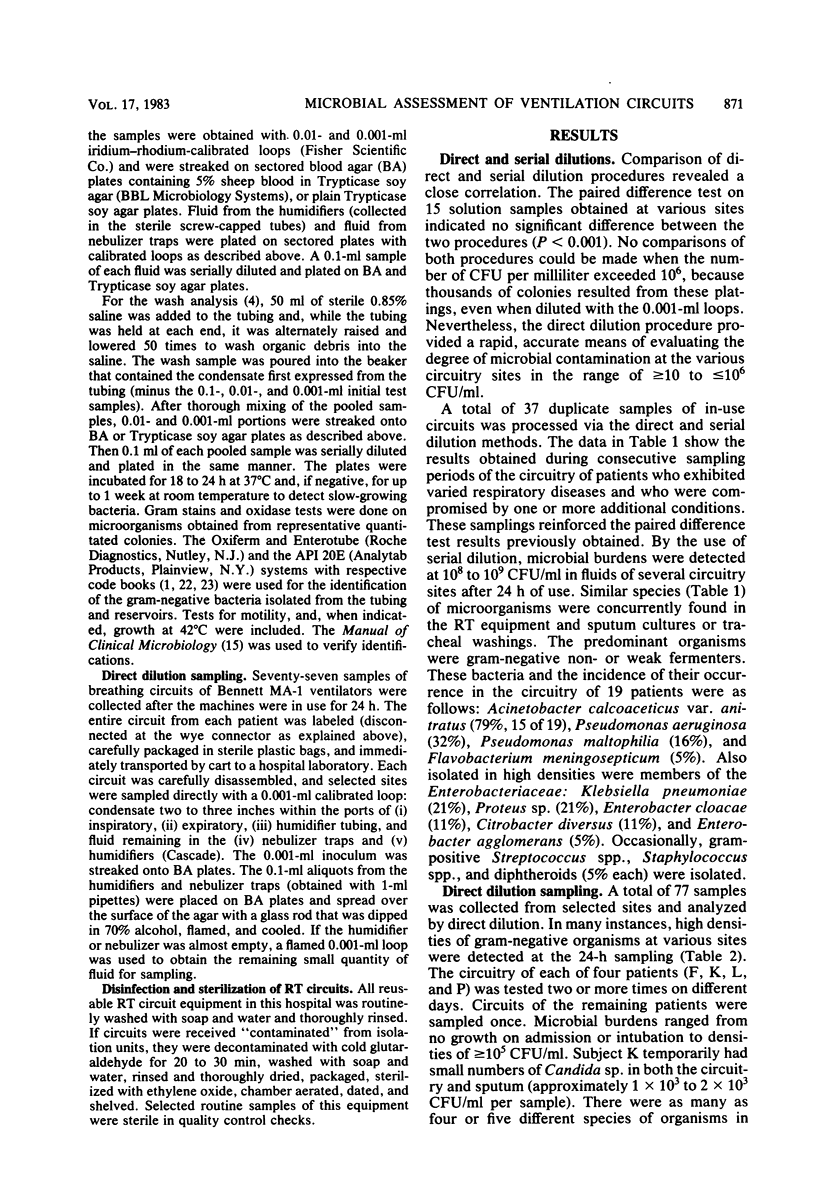
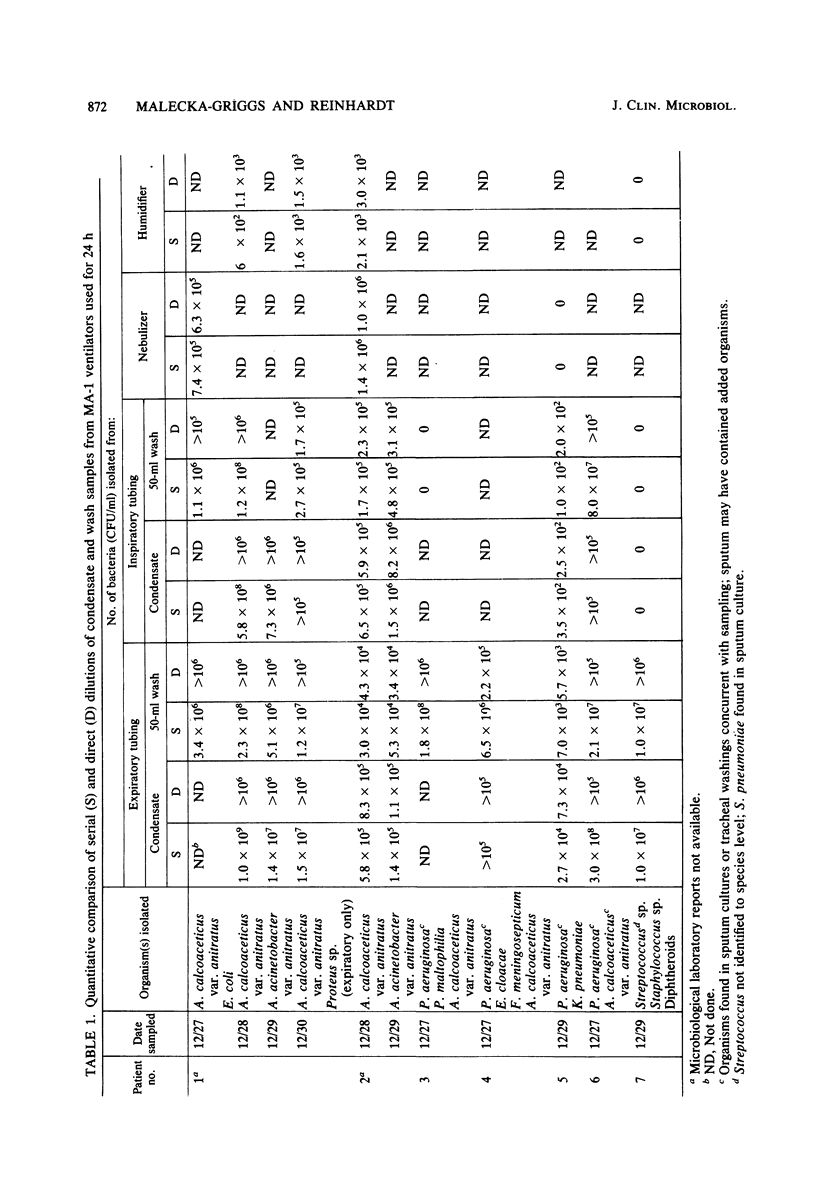
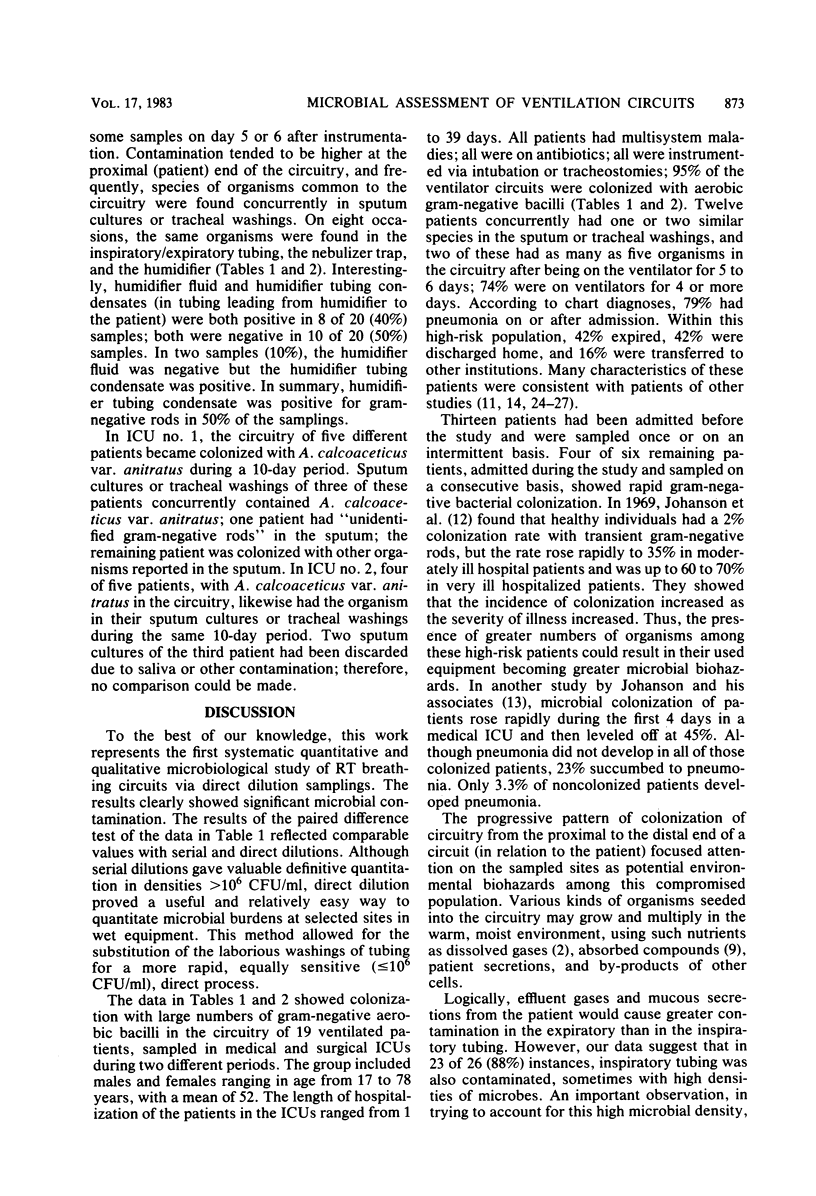
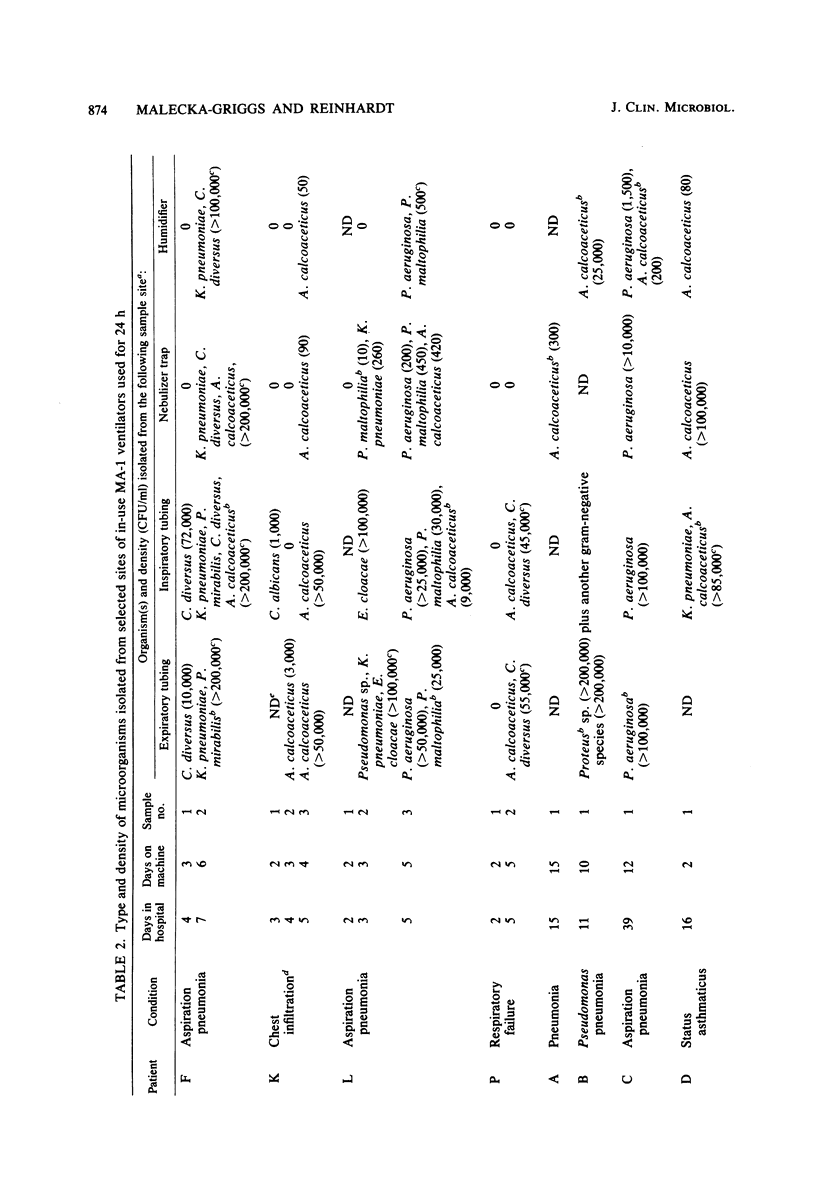
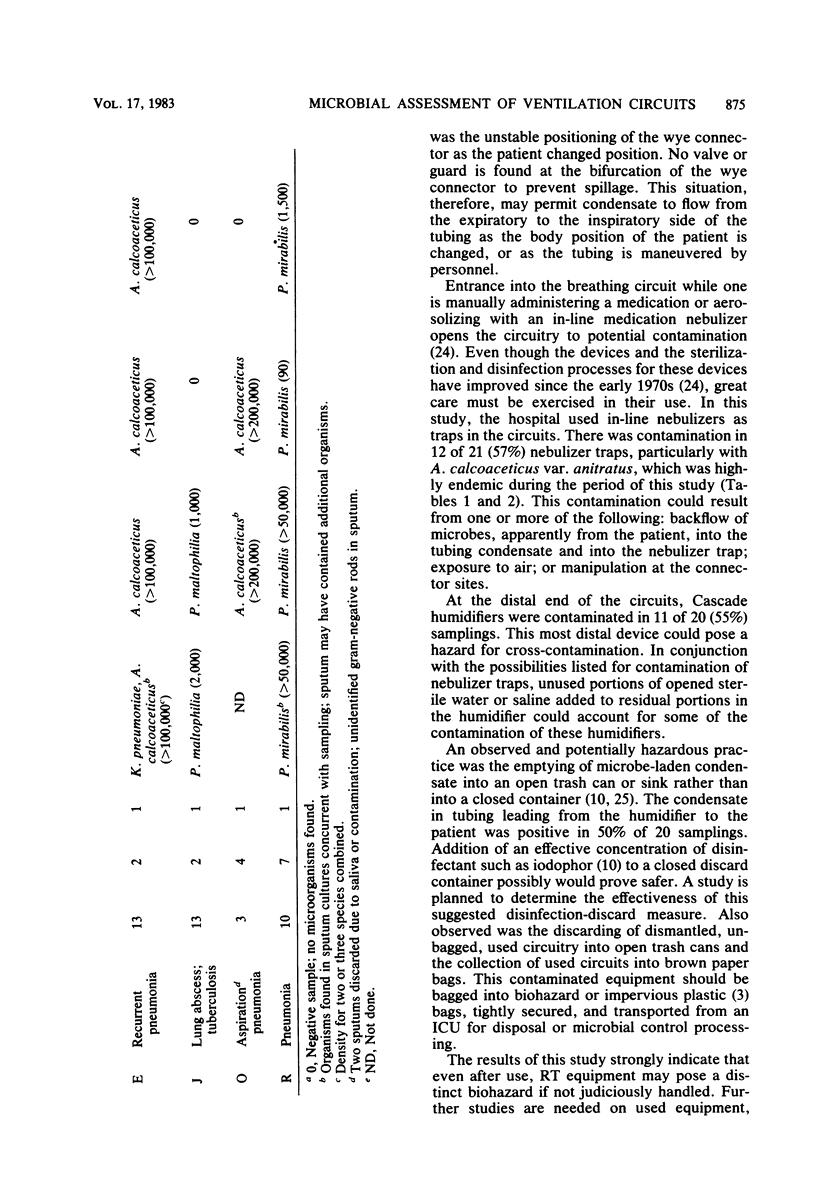
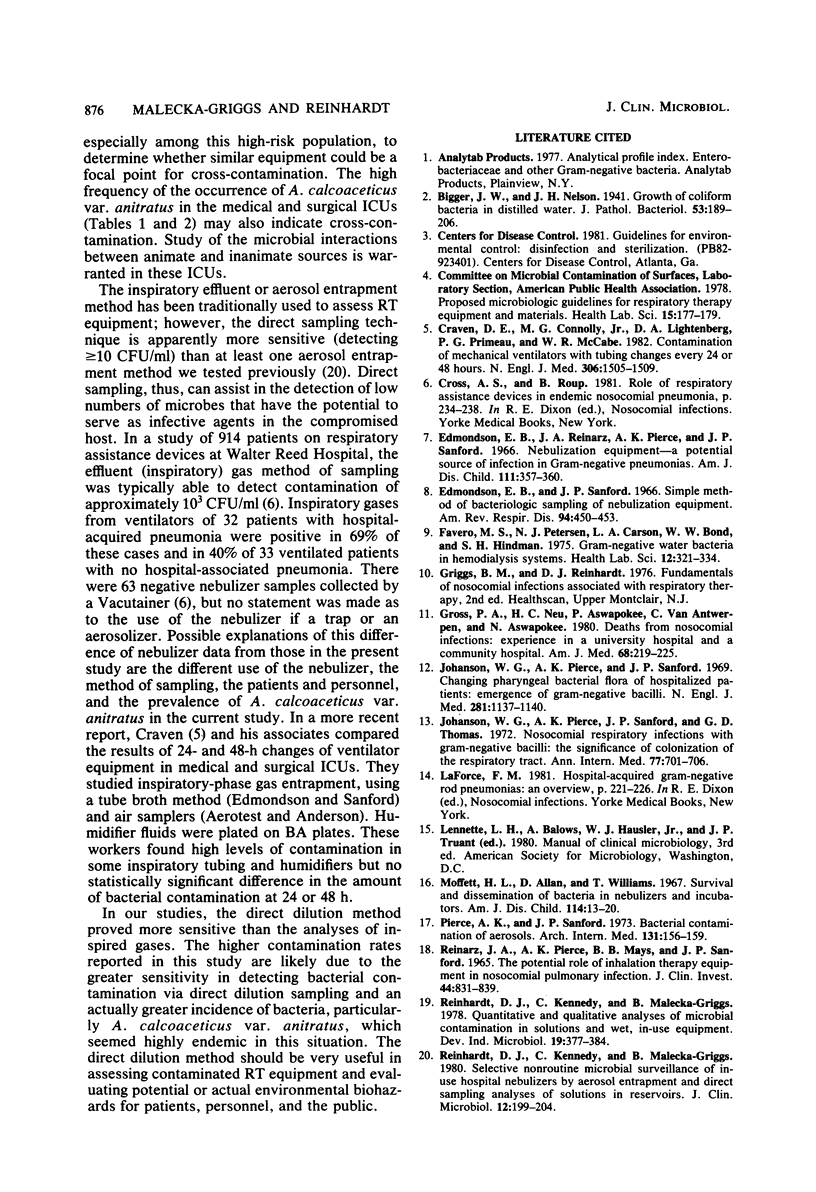
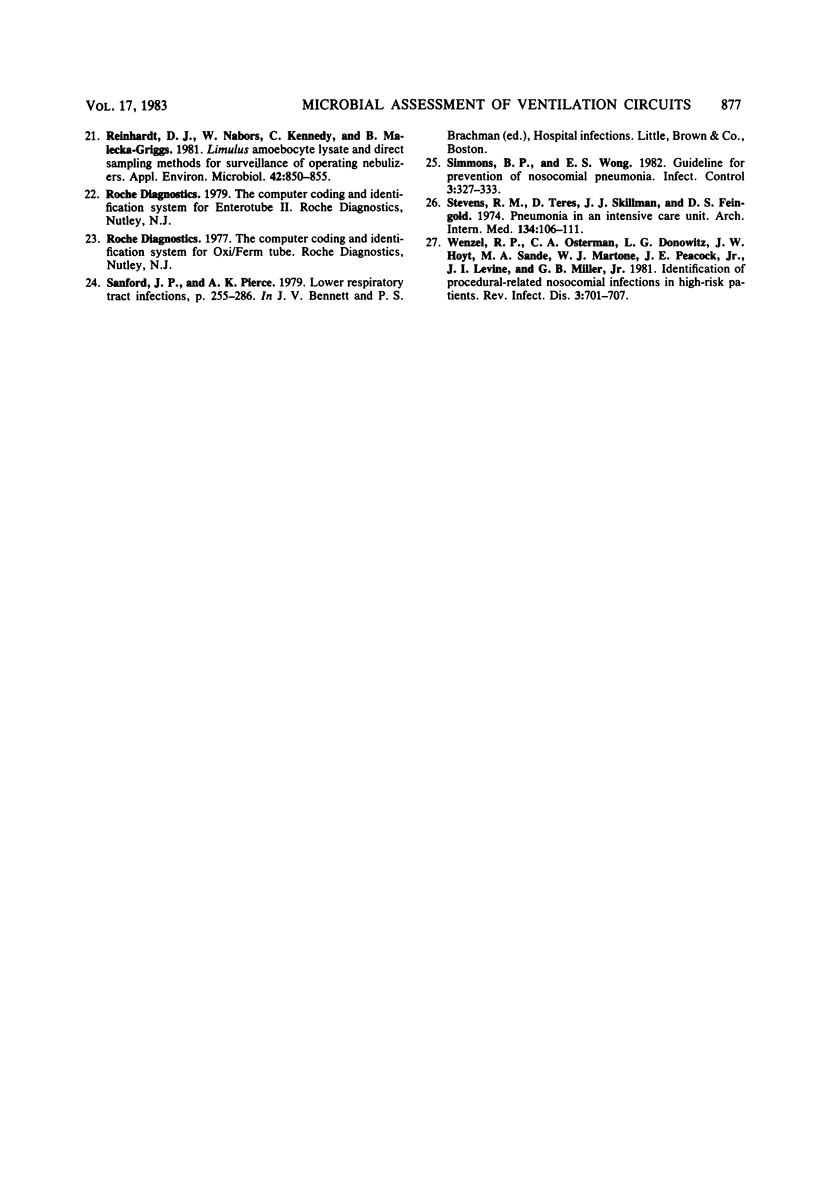
Selected References
These references are in PubMed. This may not be the complete list of references from this article.
- Craven D. E., Connolly M. G., Jr, Lichtenberg D. A., Primeau P. J., McCabe W. R. Contamination of mechanical ventilators with tubing changes every 24 or 48 hours. N Engl J Med. 1982 Jun 24;306(25):1505–1509. doi: 10.1056/NEJM198206243062501. [DOI] [PubMed] [Google Scholar]
- Edmondson E. B., Reinarz J. A., Pierce A. K., Sanford J. P. Nebulization equipment. A potential source of infection in gram-negative pneumonias. Am J Dis Child. 1966 Apr;111(4):357–360. doi: 10.1001/archpedi.1966.02090070055004. [DOI] [PubMed] [Google Scholar]
- Edmondson E. B., Sanford J. P. Simple methods of bacteriologic sampling of nebulization equipment. Am Rev Respir Dis. 1966 Sep;94(3):450–453. doi: 10.1164/arrd.1966.94.3.450. [DOI] [PubMed] [Google Scholar]
- Favero M. S., Petersen N. J., Carson L. A., Bond W. W., Hindman S. H. Gram-negative water bacteria in hemodialysis systems. Health Lab Sci. 1975 Oct;12(4):321–334. [PubMed] [Google Scholar]
- Gross P. A., Neu H. C., Aswapokee P., Van Antwerpen C., Aswapokee N. Deaths from nosocomial infections: experience in a university hospital and a community hospital. Am J Med. 1980 Feb;68(2):219–223. doi: 10.1016/0002-9343(80)90357-5. [DOI] [PubMed] [Google Scholar]
- Johanson W. G., Jr, Pierce A. K., Sanford J. P., Thomas G. D. Nosocomial respiratory infections with gram-negative bacilli. The significance of colonization of the respiratory tract. Ann Intern Med. 1972 Nov;77(5):701–706. doi: 10.7326/0003-4819-77-5-701. [DOI] [PubMed] [Google Scholar]
- Johanson W. G., Pierce A. K., Sanford J. P. Changing pharyngeal bacterial flora of hospitalized patients. Emergence of gram-negative bacilli. N Engl J Med. 1969 Nov 20;281(21):1137–1140. doi: 10.1056/NEJM196911202812101. [DOI] [PubMed] [Google Scholar]
- Moffet H. L., Allan D., Williams T. Survival and dissemination of bacteria in nebulizers and incubators. Am J Dis Child. 1967 Jul;114(1):13–20. doi: 10.1001/archpedi.1967.02090220019003. [DOI] [PubMed] [Google Scholar]
- Pierce A. K., Sanford J. P. Bacterial contamination of aerosols. Arch Intern Med. 1973 Jan;131(1):156–159. [PubMed] [Google Scholar]
- REINARZ J. A., PIERCE A. K., MAYS B. B., SANFORD J. P. THE POTENTIAL ROLE OF INHALATION THERAPY EQUIPMENT IN NOSOCOMIAL PULMONARY INFECTION. J Clin Invest. 1965 May;44:831–839. doi: 10.1172/JCI105195. [DOI] [PMC free article] [PubMed] [Google Scholar]
- Reinhardt D. J., Kennedy C., Malecka-Griggs B. Selective nonroutine microbial surveillance of in-use hospital nebulizers by aerosol entrapment and direct sampling analyses of solutions in reservoirs. J Clin Microbiol. 1980 Aug;12(2):199–204. doi: 10.1128/jcm.12.2.199-204.1980. [DOI] [PMC free article] [PubMed] [Google Scholar]
- Reinhardt D. J., Nabors W., Kennedy C., Malecka-Griggs B. Limulus amoebocyte lysate and direct sampling methods for surveillance of operating nebulizers. Appl Environ Microbiol. 1981 Nov;42(5):850–855. doi: 10.1128/aem.42.5.850-855.1981. [DOI] [PMC free article] [PubMed] [Google Scholar]
- Simmons B. P., Wong E. S. Guideline for prevention of nosocomial pneumonia. Infect Control. 1982 Jul-Aug;3(4):327–333. doi: 10.1017/s0195941700056423. [DOI] [PubMed] [Google Scholar]
- Stevens R. M., Teres D., Skillman J. J., Feingold D. S. Pneumonia in an intensive care unit. A 30-month experience. Arch Intern Med. 1974 Jul;134(1):106–111. [PubMed] [Google Scholar]
- Wenzel R. P., Osterman C. A., Donowitz L. G., Hoyt J. W., Sande M. A., Martone W. J., Peacock J. E., Jr, Levine J. I., Miller G. B., Jr Identification of procedure-related nosocomial infections in high-risk patients. Rev Infect Dis. 1981 Jul-Aug;3(4):701–707. doi: 10.1093/clinids/3.4.701. [DOI] [PubMed] [Google Scholar]


